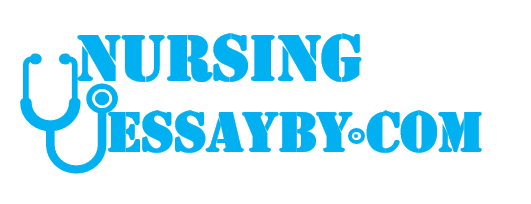In your work setting, or from the examples in a real setting,
which future trend(s) are likely to have the largest effect on patient care and related information systems? Select one of the topics for example, Health in Chapter 15. Use the three levels of change to describe how your selected area of informatics might evolve over the next several years.
Use
Box 36.4
to access and explore a futures research methodology that was not discussed in this chapter. Describe the methodology and how it could be used in health informatics.
Compare and contrast the trends of EHR directions and personal healthcare informatics.
Where do they overlap and where do they differ?
Box 36.4
Futures Studies Methodologies Resources
• The Institute for Ethics and Emerging Technologies,
http://ieet.org/index.php/IEET/more/brin20150909
• Methods and Approaches of Futures Studies,
http://crab.rutgers.edu/~goertzel/futuristmethods.htm
• World Future Society:
• Methods, http://www.wfs.org/methods
• Methodologies Forum, http://www.wfs.org/method.htm
• Futures Research Methodology Version 3.0, http://www.millennium-project.org/millennium/FRMV3.html
• Five Views of the Future: A Strategic Analysis Framework, http://www.tfi.com/pubs/w/pdf/5views_wp.pdf
• Methodologies for Studying Change and the Future,
http://www.csudh.edu/global_options/IntroFS.HTML#FSMethodo
ls
• The Millennium Project Presentations and Speeches, http://www.millenniumproject.org/millennium/presentations.html
References
1 U.N. Centre. Deputy UN, Chief Calls for Urgent Action to Tackle Global Sanitation Crisis.
2013.
2 Kvedar J., Coye M.J., Everett W. Connected health: a review of technologies and strategies to
improve patient care with telemedicine and telehealth. Health Aff (Millwood). 2014;33(2):194–
199.
3 The Economist Intelligence Unit Ltd. How Mobile Is Transforming Healthcare: Power to the
Patient. 2015.
4 Mendoza G., Okoko L., Konopka S., Jonas E. In: Arlington, VA: African Strategies for Health
project, Management Sciences for Health; . mHealth Compendium. 2013;Vol. 3.
5 World Health Organization. mHealth: New Horizons for Health Through Mobile Technologies.
Geneva, Switzerland 2011. http://www.who.int/goe/publications/goe_mhealth_web.pdf/.
6 Global Health eLearning Center. mHealth Basics: Introduction to Mobile Technology for
Health. In: Lee C.K., Raney L., L’Engle K., eds. 2014.
https://www.globalhealthlearning.org/course/mhealth-basics-introduction-mobile-technologyhealth.
7 Laxminarayan S., Istepanian R.S. UNWIRED E-MED: the next generation of wireless and
internet telemedicine systems. IEEE Trans Inform Technol Biomed. 2000;4(3):189–193.
8 Istepanian R., Laxminarayan S., Pattichis C.E. M-Health: Emerging Mobile Health Systems.
New York, NY: Springer; 2006.
9 The Office of the National Coordinator for Health Information Technology (ONC). Federal
Health IT Strategic Plan 2015–2020. Office of the Secretary, United States Department of
Health and Human Services; 2015. https://www.globalhealthlearning.org/course/mhealth-basicsintroduction-mobile-technology-health.
10 Labrique A.B., Vasudevan L., Kochi E., Fabricant R., Mehl G. mHealth innovations as health
system strengthening tools: 12 common applications and a visual framework. Glob Health Sci
Pract. 2013;1(2):160–171.
11 Mobile Marketing Association. Industry Overview.
http://www.mmaglobal.com/about/industry-overview/. 2014.
12 International Telecommunication Union. The World in 2013: ICT Facts and Figures.
http://www.itu.int/en/ITU-D/Statistics/Pages/facts/default.aspx/. 2013.
13 Research2guidance. mHealth App Developer Economics 2014: The State of the Art of
mHealth App Publishing. Berlin, Germany: research2guidance; 2014.
14 IMS Institute for Healthcare Informatics. Patient Adoption of mHealth. Use, Evidence and
Remaining Barriers to Mainstream Acceptance. Parsippany, NJ: IMS Institute for Healthcare
Informatics; 2015.
15 IMS Institute for Healthcare Informatics. Patient Apps for Improved Healthcare: From Novelty
to Mainstream. Parsippany, NJ: IMS Institute for Healthcare Informatics; 2013.
16 England N.H.S. NHS England—TECS CASE STUDY 002: Florence text messaging to
monitor a range of conditions. 2014.
17 Boulos M.N., Wheeler S., Tavares C., Jones R. How smartphones are changing the face of
mobile and participatory healthcare: an overview, with example from eCAALYX. Biomed Eng
Online. 2011;10:24.
18 Hale K., Capra S., Bauer J. A framework to assist health professionals in recommending
high-quality apps for supporting chronic disease self-management: illustrative assessment of
type 2 diabetes apps. JMIR Mhealth Uhealth. 2015;3(3):e87.
19 Moore J., Marshall M., Judge M., et al. Technology-supported apprenticeship in the
management of hypertension: a randomized controlled trial. JCOM. 2014;21(3).
20 Ben-Zeev D., Kaiser S.M., Brenner C.J., Begale M., Duffecy J., Mohr D.C. Development and
usability testing of FOCUS: a smartphone system for self-management of schizophrenia.
Psychiatr Rehabil J. 2013;36(4):289–296.

